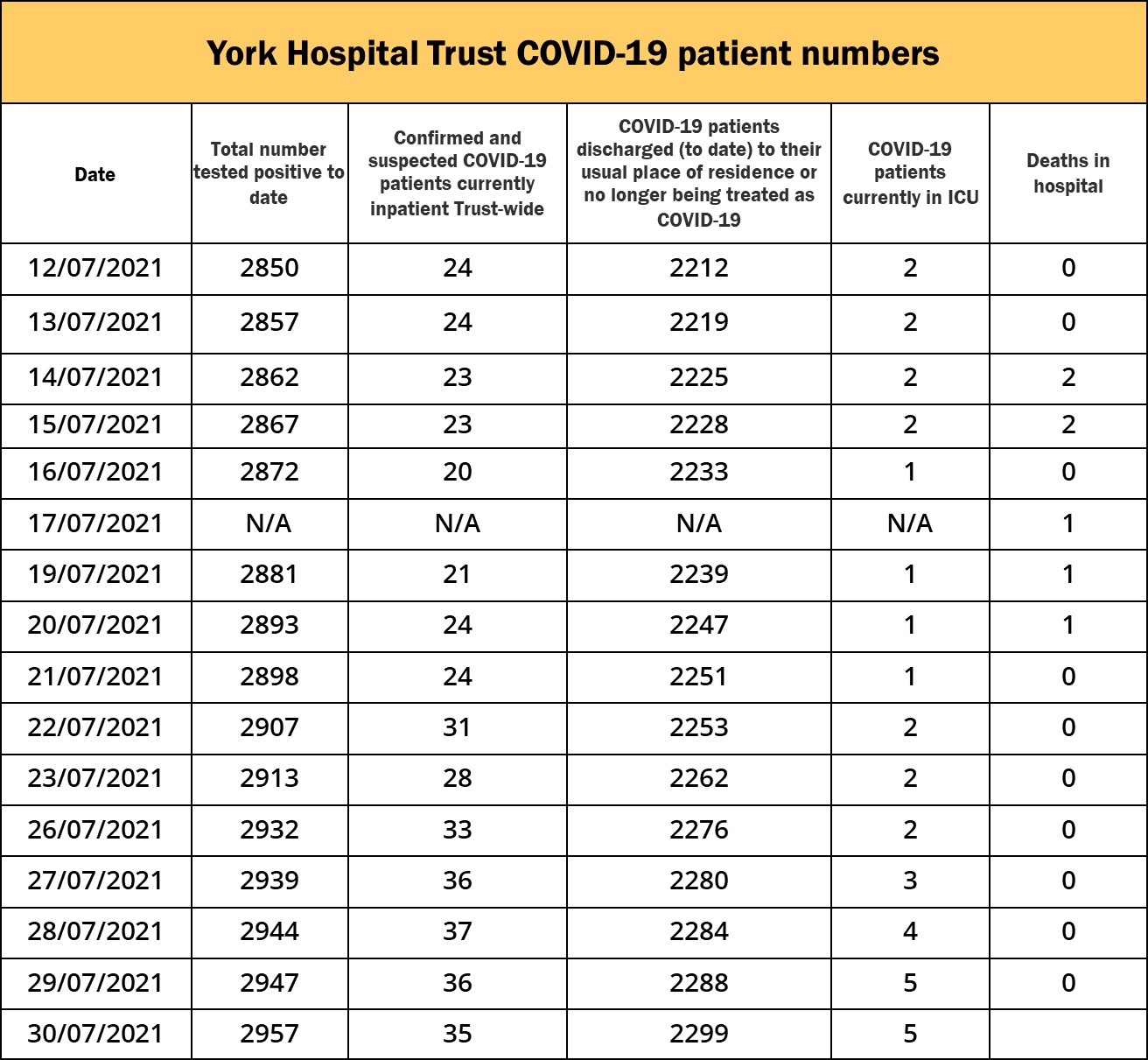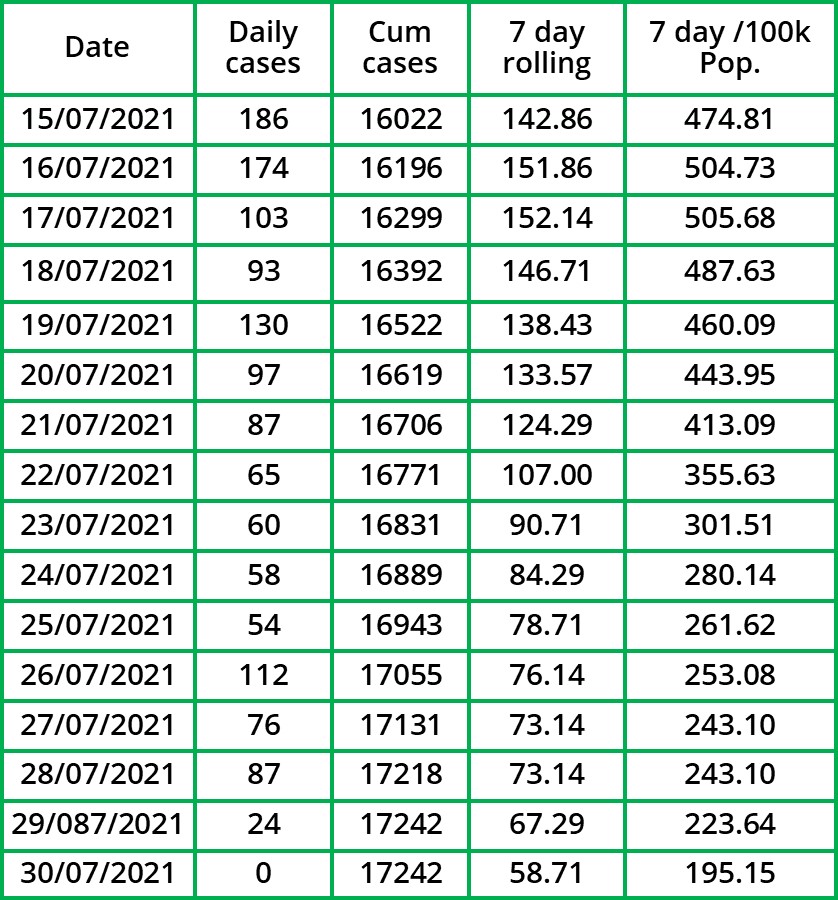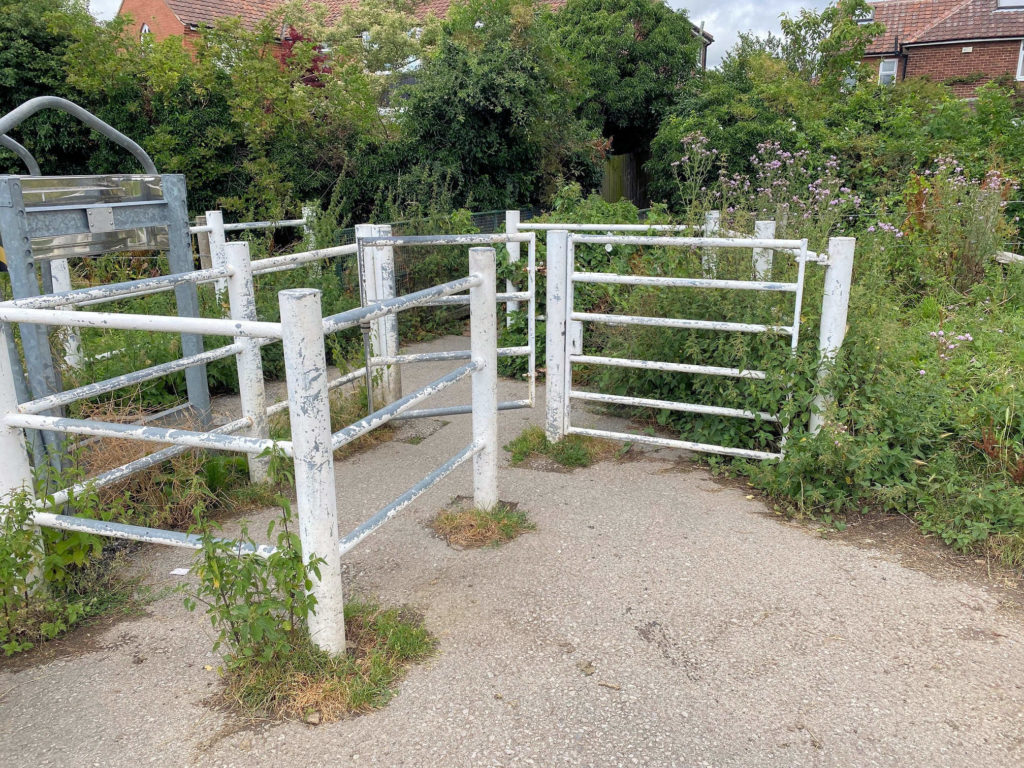Hospitals and deaths
Test results
102 positive test results today. They bring the total up to 17,242.
The rate of decline in case numbers is beginning to level off.
The number of cases in the City has fallen from 589 to 551.
The infection rate /100k population is now 261.60
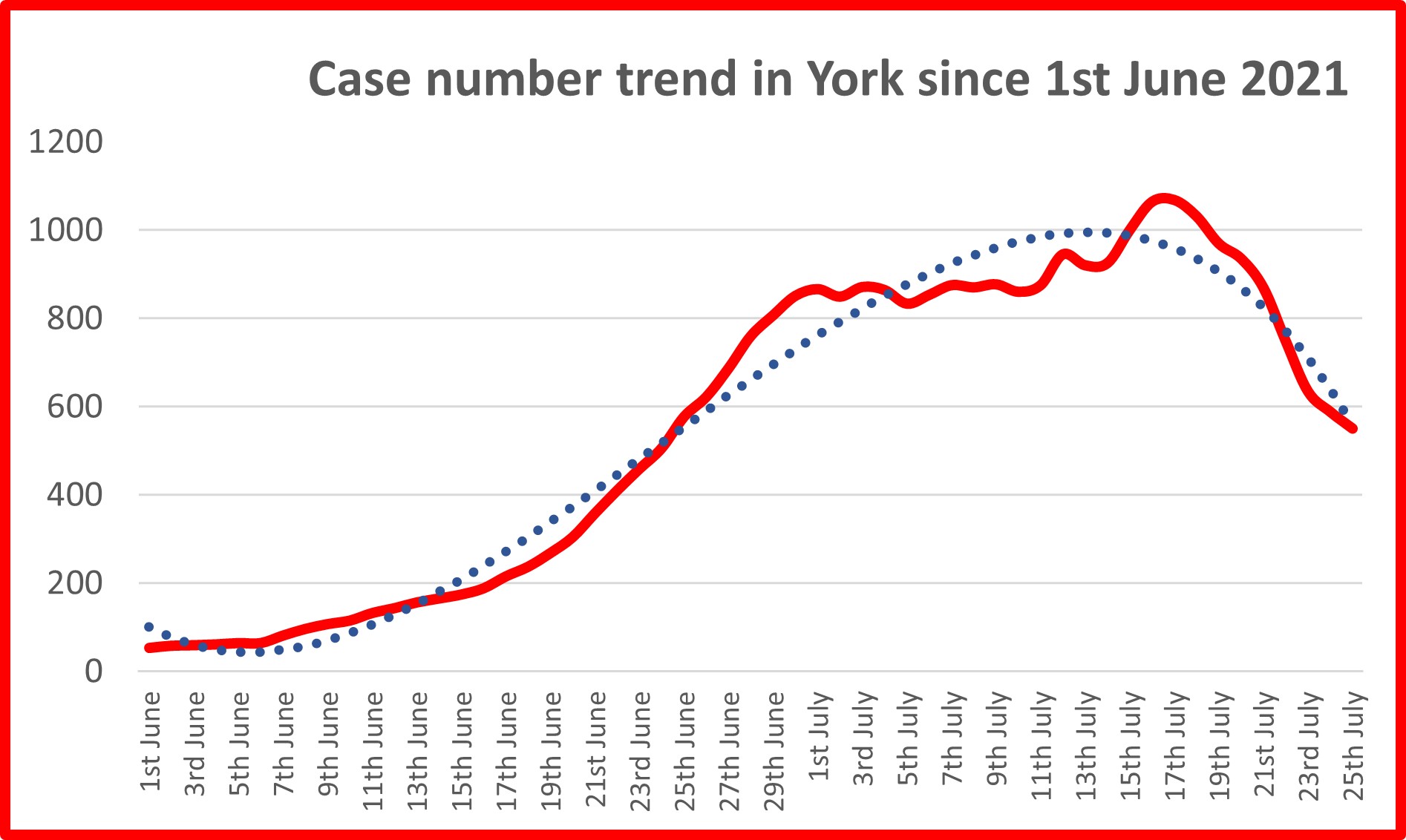
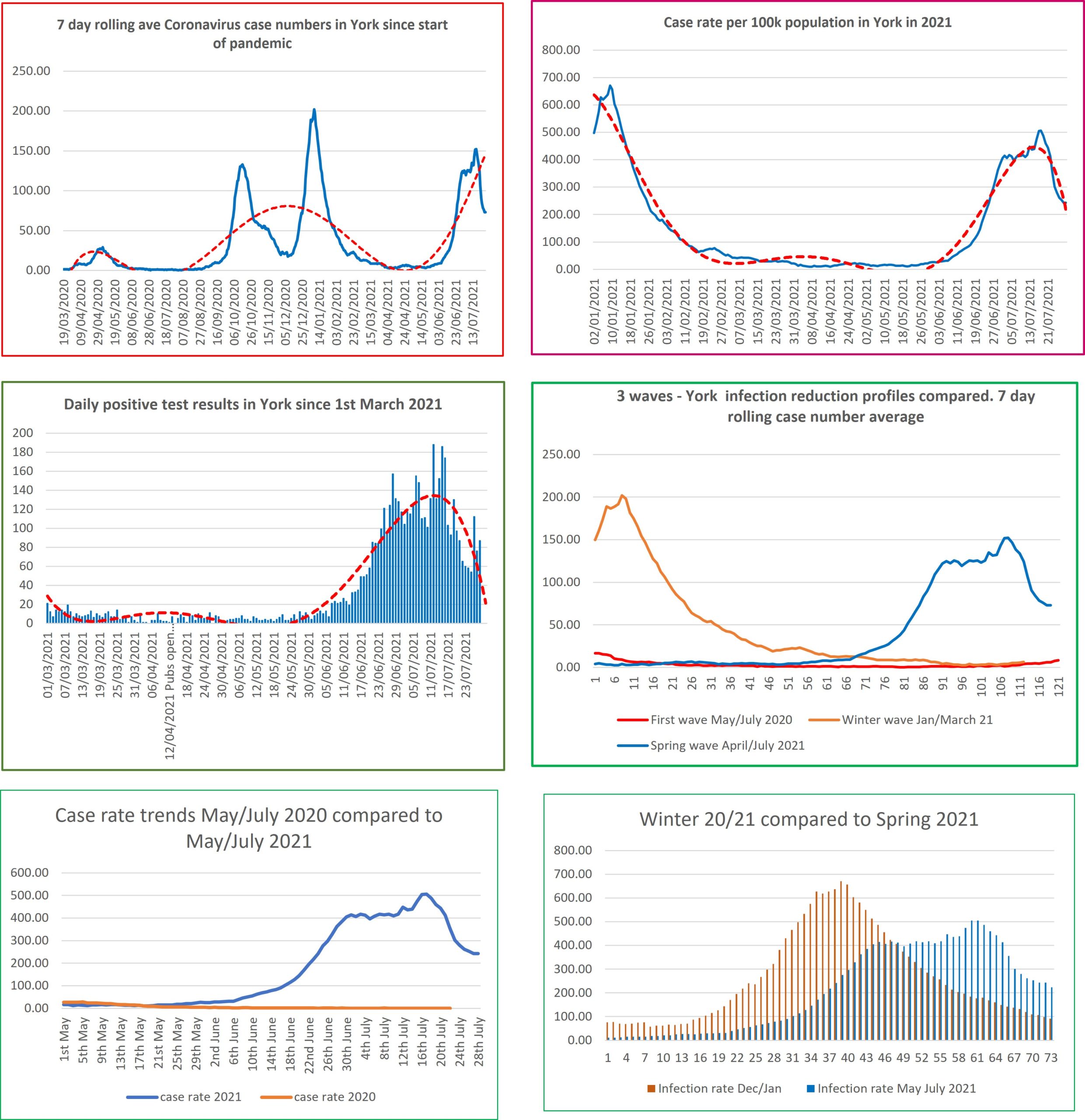
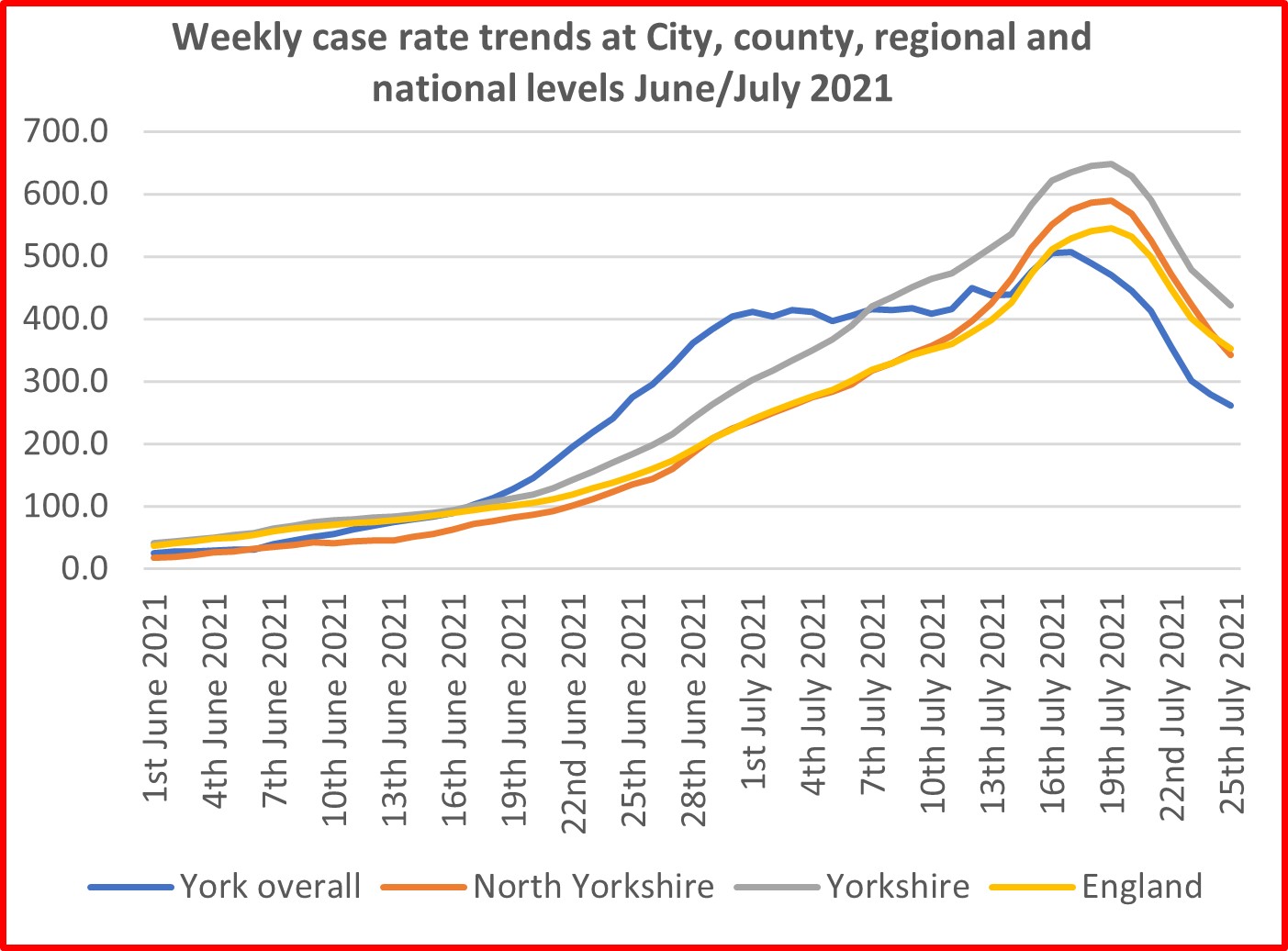
Neighbourhoods
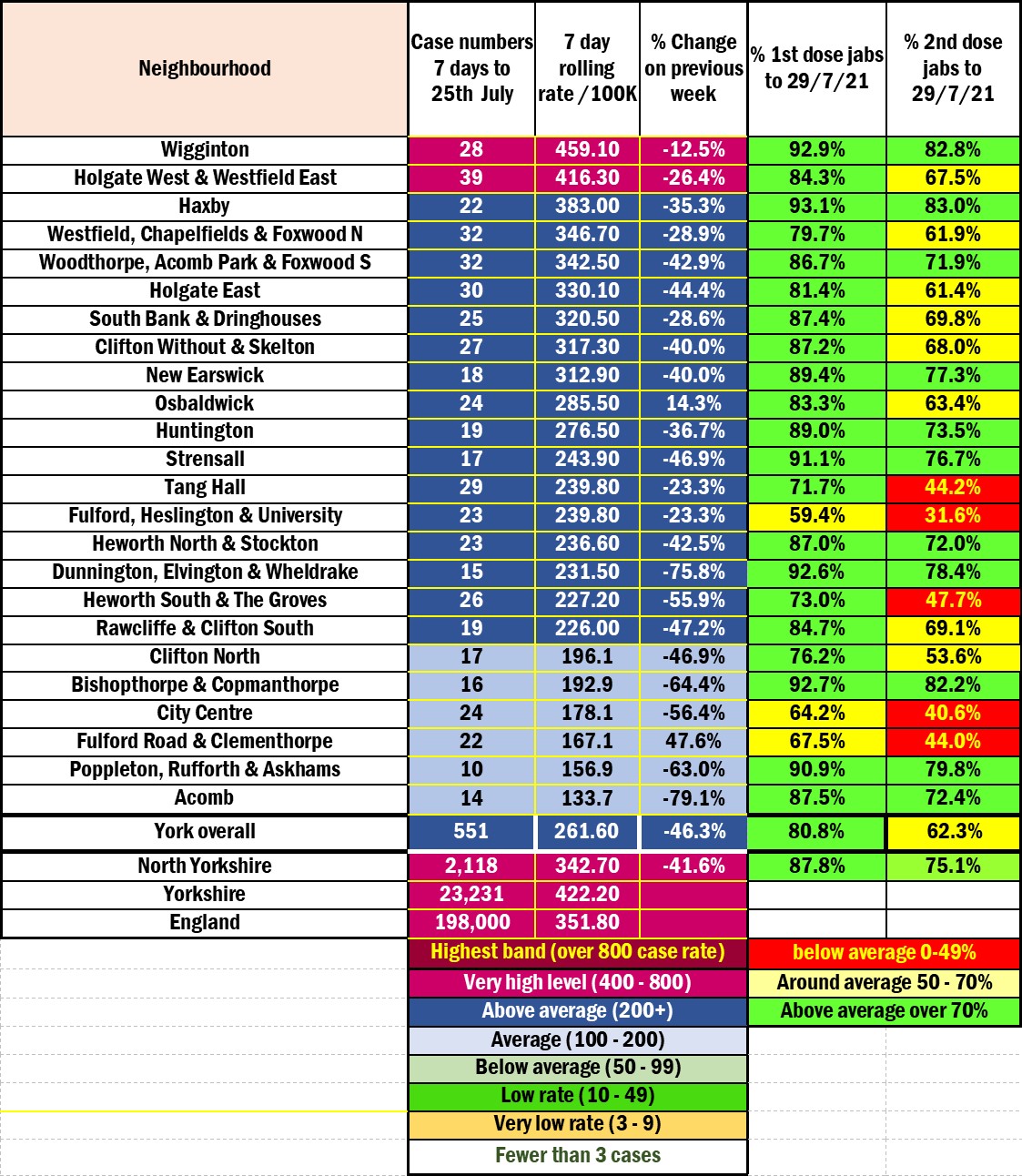
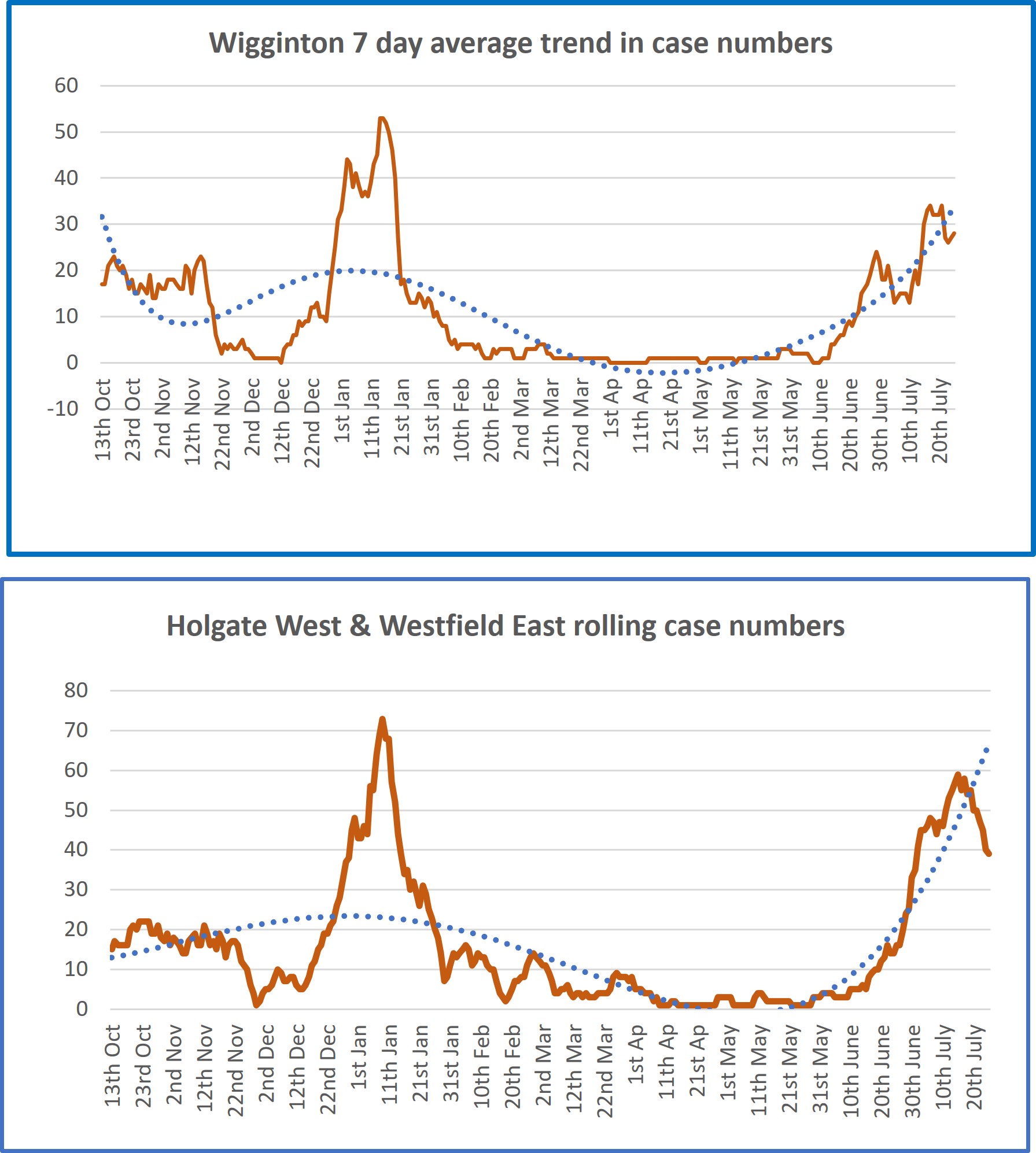
Vaccinations
712 vaccinations were completed yesterday (Thursday)
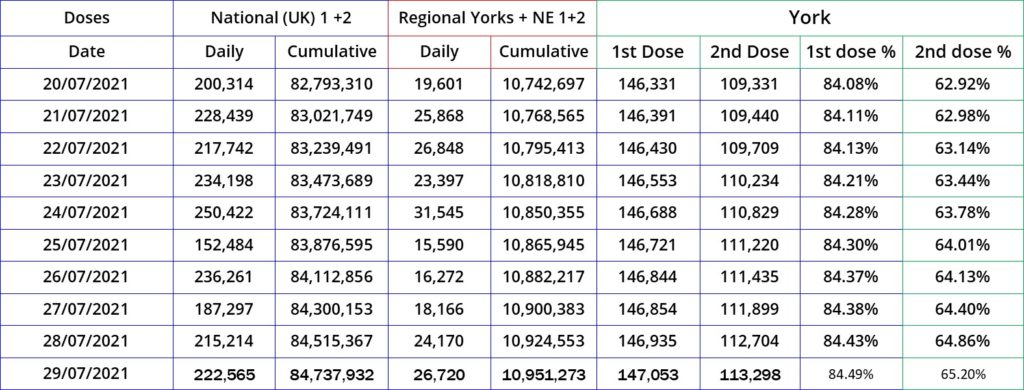
Tests
- 7233 PCR tests were completed during the week ending 25th July 2021
- Of these, 8.3% were positive. This is lower than the positivity rate of 8.5% found during the previous period.
- 2030 “lateral flow” tests were also competed on 29th July 2021
Council commentary
The Councils commentary on their “open data” web site has been updated. It is reproduced below
The data is accurate as at 8.00 a.m. on Friday 30.07.21. Some narrative for the data covering the latest period is provided here below:
People with Covid Symptoms
• NHS Pathways/111 triages – as at 27.7.21 there had been 51 total covid telephony triages in the CYC area in the last 7 days. The peak number of triages was 192 in the 7 day period to 22.9.20.
• As at 29.7.21, the Covid Symptom App estimates 1,546 per 100,000 in York with symptomatic covid (responses from a sample of 3,684 people).
Diagnosed cases
• As at 28.7.21 York has had 17,140 cases since the start of the pandemic, a rate of 8,138 per 100,000 of population. The cumulative rate in York is below the national (8,998) and regional (9,803) averages.
• The PHE ‘Exceedance’ rating compares the no. of new cases over a 14 day period with the previous 6 weeks and provides a RAG rating to indicate if the previously observed trend in the number of new cases is worsening. The latest rating for York (26.7.21) is Green.
• The provisional rate of new Covid cases per 100,000 of population for the period 21.7.21 to 27.7.21 in York is 236.5 (498 cases). (Using data published on Gov.uk on 29.7.21).
• The latest official “validated” rate of new Covid cases per 100,000 of population for the period 18.7.21 to 24.7.21 in York was 279.7 (589 cases). The national and regional averages at this date were 375.2 and 451.3 respectively (using data published on Gov.uk on 29.7.21).
• York is currently ranked 17th out of 149 Upper Tier Local Authorities (UTLAs) in England with a rank of 1 indicating the lowest 7 day rate.
• For the 7 day period 18.7.21 to 24.7.21, the number of cases in each ward varied from 8 to 58 and rates varied from 153.1 to 411.6 per 100,000.
• The rate of new Covid cases per 100,000 of population for the period 18.7.21 to 24.7.21 for people aged 60+ in York was 64.6 (32 cases). The national and regional averages were 112.0 and 142.5 respectively. Case rates are currently highest in the following age ranges: 10-14 (619 per 100,000); 30-34 (410) and 35-39 (405).
• As at 28.7.21, the latest 7 day positivity rate in York (Pillar 2 PCR tests only) was 10.72%. The national and regional averages are 12.2% and 14.8% respectively.
• As at 28.7.21 the latest 7 day positivity rate in York (Pillar 2 Lateral Flow Tests only) was 1.0%. The national and regional averages are 1.1% and 1.4% respectively.
• As at 27.7.21 the latest 7 day positivity rate in York (Pillar 1 tests only) was 1.2%. The national average is 2.1%.
• As at 23.7.21 York University reported 24 individuals within the University community who were currently self-isolating because they have had a positive COVID-19 test. The peak number was 331 on the 19.10.20.
• As at 26.7.21 York St. John reported 3 individuals within the University community who were currently self-isolating because they have had a positive COVID-19 test. The peak number was 82 on the 8.10.20.
Contact Tracing
• Local Contact Tracing. Between 10.3.21 and 23.7.21, 2,532 referrals had been actioned by the local contact tracing service. Of the referrals actioned, 2,319 (91.6%) were successful and 213 (8.4%) were unable to be reached via phone or home visit, but guidance leaflets were posted where possible. (NB on the 10.3.21 the local CYC team became responsible for contacting all cases rather than just those that the national team could not contact).
Cases in Residential Care Settings
• As at 22.7.21 there were 6 care homes in the CYC area with confirmed Covid-19 infection (at least 1 case of either a staff member or resident).
• The latest ‘outbreak’ (2+ cases of either a staff member or resident) in a residential care setting in York were reported by PHE on 22.7.21 (1 home).
Cases amongst School Aged Children
• In the 7 days up to 26.7.21 there were 130 children of primary or secondary school age who tested positive.
COVID Bed Occupancy in York Hospital
• As at 27.7.21 there were 23 confirmed Covid-19 patients in General/Acute beds. The previous figure was 18 on 20.7.21. The peak number was 157 on 19.1.21.
• As at 27.7.21 there were 3 confirmed Covid-19 patients and 0 suspected Covid-19 patients in the Intensive Treatment Unit. The previous figures were 1 and 0 on 20.7.21. The peak number for people in ITU was 19 on 10.5.20.
R Number
• The ‘R’ value (the number of people that one infected person will pass on a virus to, on average) for the North East and Yorkshire area on 23.7.21 was estimated to be in the range 1.2 to 1.5. The previous estimate was (1.2 to 1.6) on 16.7.21.
Variants of Concern
• In the latest month for which data is available, 456 cases in York (with a specimen date between 27th June 2021 and 26th July 2021) had been processed in a laboratory which is able to carry out the required sequencing in order to identify Variants of Concern (VOC) or Variants under Investigation (VUI). Of these, there had been 455 cases (genomically confirmed or provisional genotyping) of the Delta Variant of Concern (VOC-21APR-02) which was first identified in India.
Total Vaccinations
• As at 28.7.21 a total of 147,752 CYC residents have had the first dose of the vaccine. This represents 84.7% of the estimated adult (18+) population of York (ONS 2020)
• As at 28.7.21 a total of 113,021 CYC residents have had both doses of the vaccine. This represents 64.8% of the estimated adult (18+) population of York (ONS 2020).
• Source: PHE Covid-19 Situational Awareness Explorer.
Deaths
The two sources about deaths from Covid-19 at LA level are ONS data and local registrar data. They are derived from the same source (civil registration data). ONS data is more comprehensive as it includes deaths of York residents which have occurred and been registered outside York. Local registrar data provides a breakdown by age and gender. For both data sources a death from Covid-19 is said to have occurred when Covid-19 has been recorded on the death certificate. The most recently available data is summarised below:
• ONS Weekly data: In the most recent period (Week 28: 10.7.21 to 16.7.21) 0 Covid-19 deaths were recorded as having occurred for CYC residents. There has been one recorded covid death between week 18 and week 28.
• ONS Cumulative data: Since the start of the pandemic, for deaths occurring up to 16th July 2021 and registered up to 24th July 2021, 397 Covid-19 deaths were recorded as having occurred for CYC residents (228 in hospital, 136 in care homes, 25 at home/elsewhere and 8 in a hospice). The number of deaths per 100,000 of population in York is 188.49 which is lower than the national average of 233.99
• Age / Gender breakdown (using registrar data): The average age of the CYC residents who died was 82.1, with an age range of 40-104. The age profile of the CYC residents who have died is older than the national average (79.4% were aged 75+ compared with 72.9% nationally). 47.9% of the CYC residents who died were male. The national average is 54.4%.

